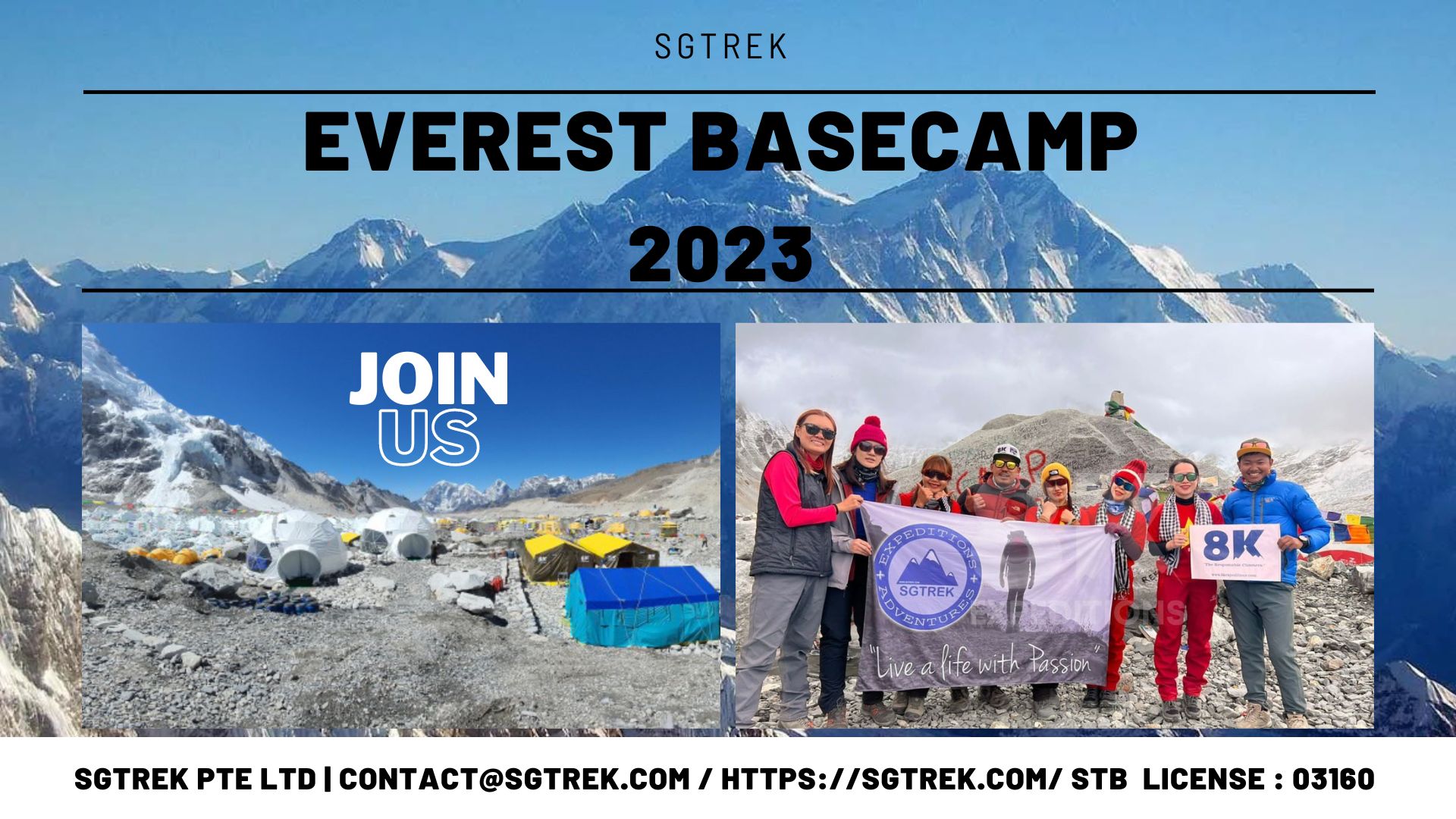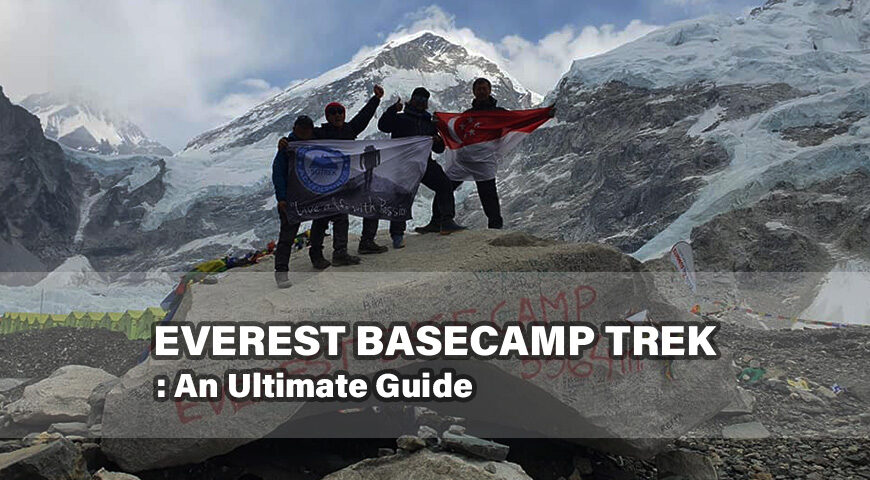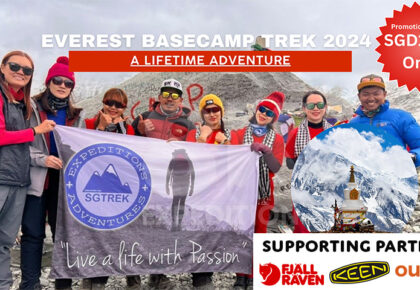Everest Basecamp Trek is a popular adventure in Nepal, attracting thousands of trekkers each year to experience the beauty of the world’s highest mountain range. The trek takes you through picturesque Sherpa villages, lush forests, and alpine meadows to the base of Mount Everest, offering stunning views of some of the world’s most iconic peaks along the way.
The trek starts from Lukla and takes about 7-12 days of hiking to reach the base camp, with several stops at teahouses and villages along the way to acclimate to the altitude. The trail passes through Namche Bazaar, Tengboche, Dingboche, Gorakshep, and finally reaches the base camp, situated at an elevation of 5,364 meters.
One of the highlights of the trek is visiting Tengboche Monastery, the largest monastery in the Khumbu region, where you can learn about the local Sherpa culture and religion. Along the way, you will also encounter yaks, blue sheep, and other wildlife, as well as experience the daily life of the local communities.
The trek can be challenging due to the high altitude and the demanding physical exertion, but the rewards are ample, including breath-taking views of the Himalayas, a unique cultural experience, and a sense of accomplishment from reaching the base of the world’s highest mountain.
It is important to be well prepared for the trek, both physically and mentally, and to plan the trip with a reputable trekking agency. Proper acclimatization, a slow pace, and adequate hydration and nutrition are crucial to prevent altitude sickness and ensure a safe and enjoyable trek.
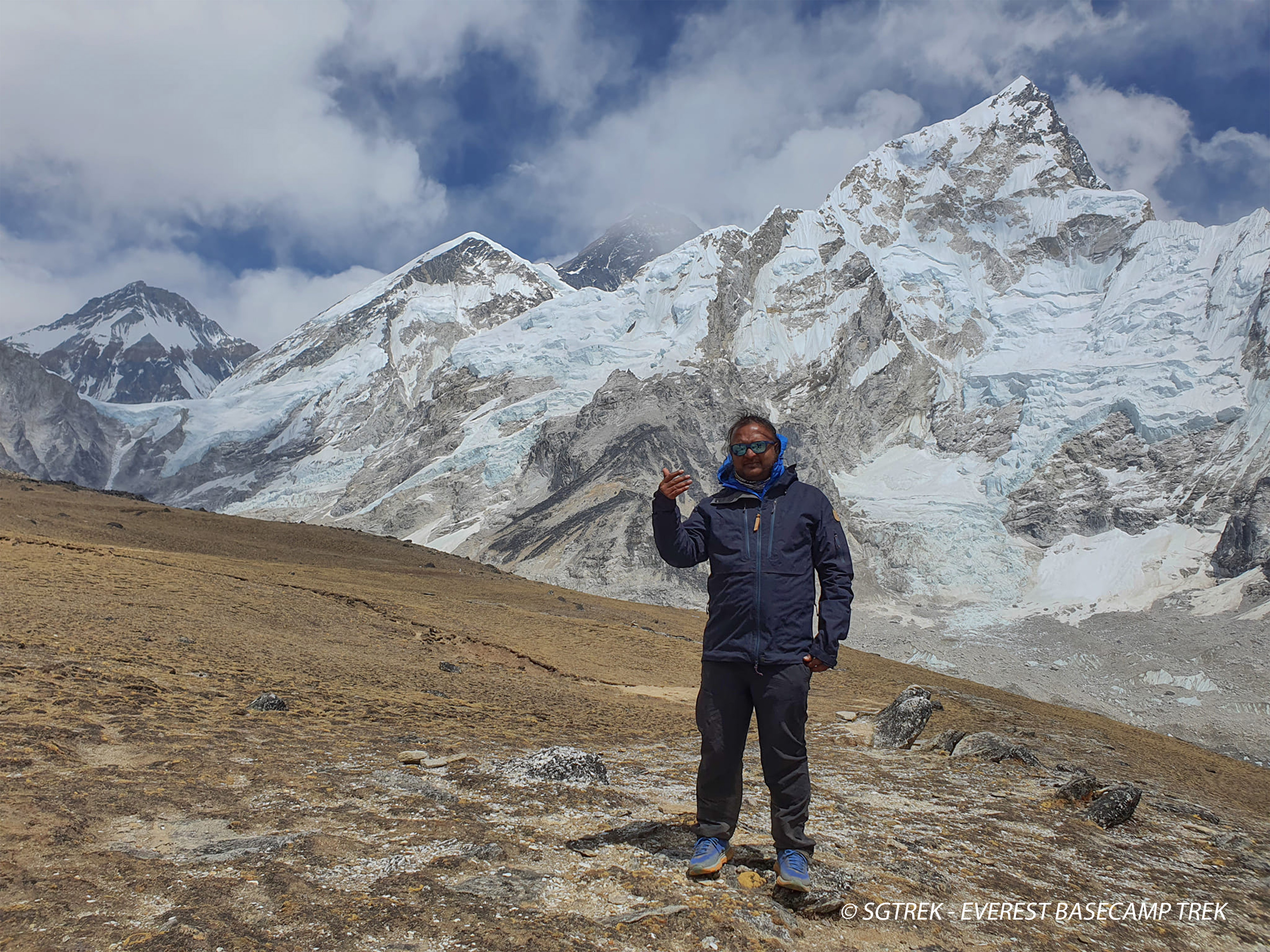
BEST SEASON TO HIKE EVEREST BASECAMP
The best season for hiking to Everest Basecamp is from September to November and from March to May. These months offer clear skies, mild temperatures, and relatively stable weather conditions, making the trek more enjoyable.
In September and October, the monsoon season has ended, and the skies are clear, providing unobstructed views of the mountains. The temperature during these months is mild, making it comfortable for trekking.
In March to May, the weather starts to warm up, and the rhododendron and other wildflowers are in bloom, making the trek even more picturesque.
During the winter months of December to February, the weather is harsh, with cold temperatures and heavy snowfall, making the trek challenging and sometimes even impossible. The summer months of June to August are the monsoon season in Nepal, and the trek is not recommended due to heavy rainfall, leech infestations, and potential landslides.
It is important to note that weather conditions in the mountains can change quickly, and it is advisable to check the latest conditions and forecasts before embarking on the trek. A reputable trekking agency can also provide valuable information on the best time to trek and the current weather conditions.
HOW TO APPLY PERMITS
To trek to Everest Basecamp, you will need to obtain a TIMS (Trekkers’ Information Management System) card and a Sagarmatha National Park Permit. Both permits are required for all trekkers and can be obtained in Kathmandu or at the entry point of the trek in Lukla.
Here are the steps to apply for the permits:
- TIMS Card: The TIMS card is issued by the Trekking Agencies’ Association of Nepal (TAAN) and is mandatory for all trekkers. You can apply for the card through a trekking agency or directly at the TAAN office in Kathmandu.
- Sagarmatha National Park Permit: The Sagarmatha National Park Permit is required for trekking in the Sagarmatha National Park, which encompasses the Everest Basecamp trek. You can apply for the permit at the Sagarmatha National Park office in Kathmandu or at the entry point of the trek in Lukla.
Both permits require two passport-sized photos, a copy of your passport, and the payment of a fee. The fees for the permits vary depending on the season and the type of trekking permit, and the fees are subject to change. It is advisable to check the latest fees and regulations before applying for the permits.
It is important to note that the permits are non-transferable and non-refundable, and you must always carry them with you during the trek. It is also advisable to keep copies of the permits in case the original documents are lost or damaged.
By obtaining the necessary permits, you can ensure that you are trekking legally and responsibly in the Sagarmatha National Park and supporting the conservation and management of the area.
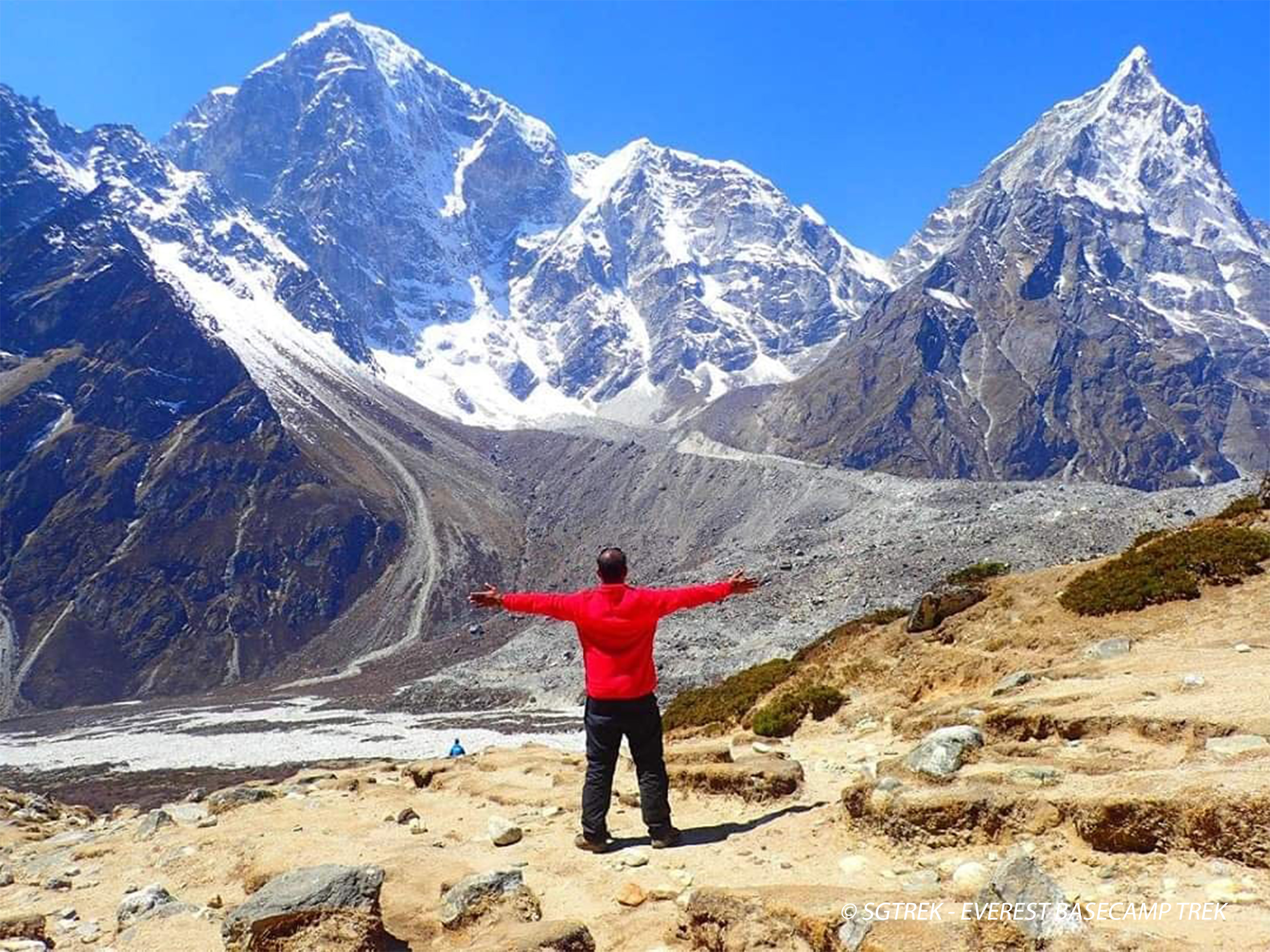
VISA REQUIREMENTS FOR NEPAL
Visitors to Nepal require a visa to enter the country, which can be obtained from Nepalese embassies and consulates or on arrival at the airport in Kathmandu. Here are the requirements for obtaining a visa to Nepal:
- Passport: A valid passport with at least 6 months validity from the date of arrival in Nepal is required.
- Visa application form: A completed visa application form, which can be obtained at the Nepalese embassy or consulate or downloaded from the official website of the Department of Immigration, Nepal.
- Passport-sized photo: Two recent passport-sized photos are required to be attached to the visa application form.
- Visa fee: The visa fee varies depending on the duration of stay and the type of visa, and the fees are subject to change. The visa fee can be paid in cash or by credit card.
- Proof of onward travel: Visitors to Nepal must have proof of onward travel, such as a return ticket or onward travel itinerary, to ensure that they will leave the country at the end of their stay.
Tourist visas are available for 15 or 30 days, or 90 days and can be extended for an additional fee. Visitors can also apply for a multiple-entry visa, which allows for multiple entries into the country over a specified period.
It is important to check the latest visa requirements and fees before applying for a visa to Nepal as the requirements and fees are subject to change. A reputable trekking agency can also provide valuable information on the visa requirements for Nepal and assist with the visa application process.
WHAT IT IS LIKE TO HIKE EVEREST BASECAMP ON A 15DAYS TREK
The 15-day trek to Everest Basecamp is a challenging but rewarding experience. It takes you through some of the most beautiful and remote areas of Nepal, offering breathtaking views of the Himalayas and the chance to immerse yourself in the local culture. Here’s what you can expect during the trek:
- Scenic journey: The journey to Everest Basecamp is itself an adventure, with a scenic flight to Lukla, the starting point of the trek. The flight offers breathtaking views of the Himalayas, and the landing at Lukla’s tiny airport is considered one of the most exciting in the world.
- Varying landscapes: The trek takes you through diverse landscapes, from lush green forests to barren high-altitude deserts. You will cross suspension bridges over fast-flowing rivers, hike along narrow trails with steep drop-offs, and walk through traditional Sherpa villages, offering a glimpse into the local culture.
- Physical challenge: The trek to Everest Basecamp is physically demanding, with long days of hiking, steep ascents and descents, and high altitude. You will need to be in good physical condition, with a strong resolve to complete the trek.
- High altitude: The trek takes you to elevations over 5,000 meters, and it is essential to acclimatize properly to avoid altitude sickness. Your guide will advise you on the best pace to hike and rest, and you will have several opportunities to rest and acclimatize during the trek.
- Cultural immersion: The trek provides an opportunity to immerse yourself in the local culture, meeting the friendly and hospitable Sherpa people and learning about their customs and traditions. You will also have the chance to visit monasteries and temples and learn about the Buddhist religion.
- Natural beauty: The trek offers stunning views of the Himalayas, including Mount Everest, Lhotse, and Nuptse, among others. The high-altitude landscapes are also home to a variety of flora and fauna, including rhododendrons, yaks, and Himalayan Tahr.
In conclusion, the 15-day trek to Everest Basecamp is a unique and life-changing experience, offering a combination of physical challenge, cultural immersion, and natural beauty. With proper preparation and a positive attitude, you will return from the trek with memories that will last a lifetime.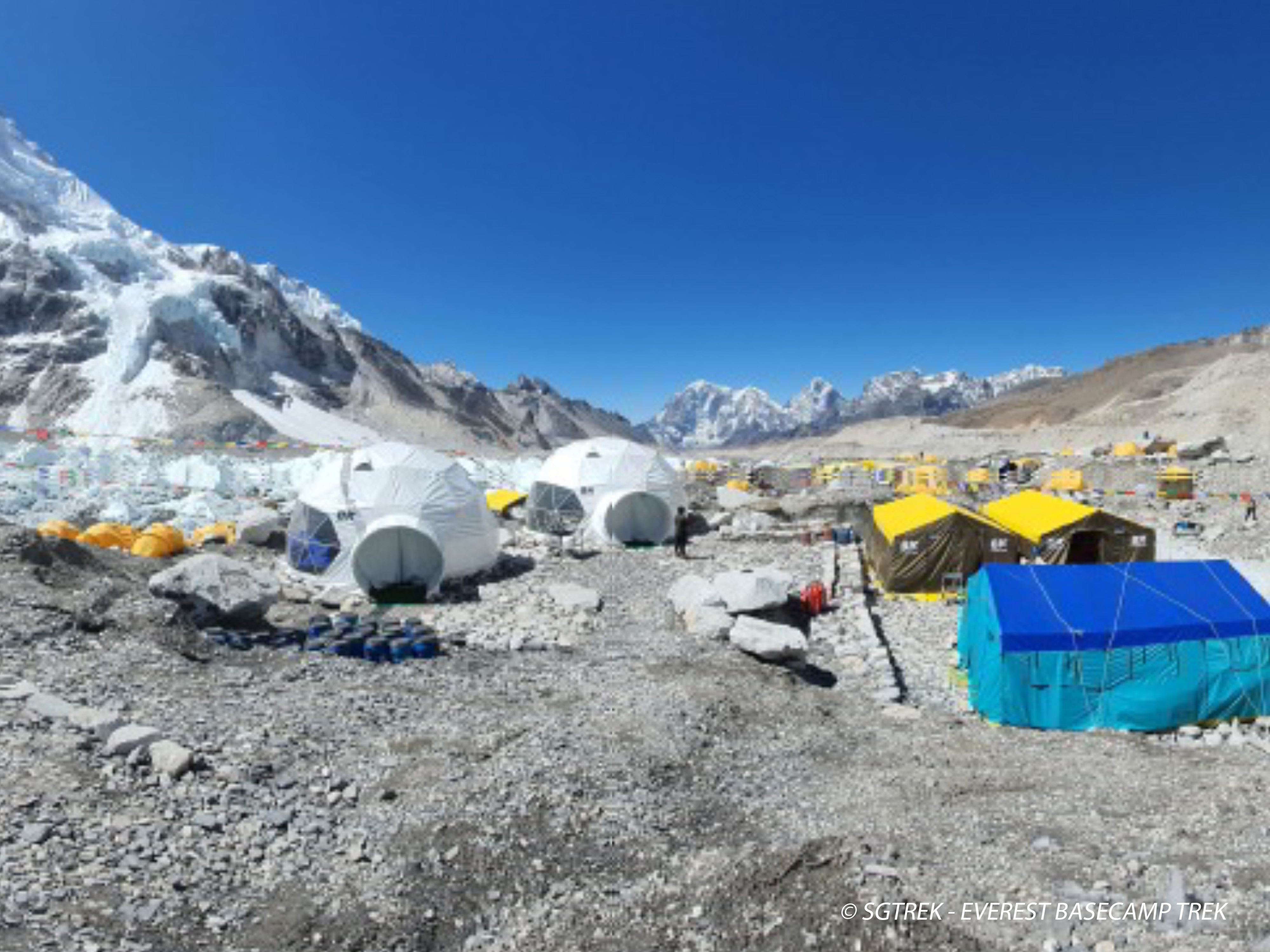
DAILY BREAKDOWN OF THE TREK
The trek from Kathmandu to Everest Basecamp is a journey that takes you through some of the most stunning landscapes in Nepal. Here’s what you can expect during the trek:
- Flight to Lukla: The trek starts with a scenic flight from Kathmandu to Lukla, which takes about 30 minutes. The flight offers stunning views of the Himalayas and is considered one of the most exciting landings in the world.
- Trek to Phakding: The first day of the trek takes you from Lukla to Phakding, a journey of about 4 hours. The trail follows the Dudh Koshi River and takes you through lush forests and traditional Sherpa villages.
- Trek to Namche Bazaar: The second day of the trek takes you from Phakding to Namche Bazaar, the largest Sherpa town in the region. The trail takes you through several suspension bridges and offers stunning views of the Himalayas.
- Acclimatization day in Namche Bazaar: On the third day, you will spend a day in Namche Bazaar to acclimatize to the high altitude. You will take a short hike to nearby villages and monasteries and explore the town.
- Trek to Tengboche: The fourth day of the trek takes you from Namche Bazaar to Tengboche, a journey of about 5 hours. The trail takes you through rhododendron forests and offers stunning views of the Himalayas, including Mount Everest, Ama Dablam, and Lhotse.
- Trek to Dingboche: The fifth day of the trek takes you from Tengboche to Dingboche, a journey of about 5 hours. The trail takes you through high-altitude deserts and offers stunning views of the surrounding peaks.
- Acclimatization day in Dingboche: On the sixth day, you will spend a day in Dingboche to acclimatize to the high altitude. You will take a short hike to nearby villages and monasteries and explore the area.
- Trek to Lobuche: The seventh day of the trek takes you from Dingboche to Lobuche, a journey of about 5 hours. The trail takes you through high-altitude deserts and offers stunning views of the surrounding peaks.
- Trek to Gorak Shep: The eighth day of the trek takes you from Lobuche to Gorak Shep, a journey of about 5 hours. The trail takes you through high-altitude deserts and offers stunning views of the surrounding peaks, including Mount Pumori and Mount Nuptse.
- Hike to Kalapatthar: On the ninth day, you will take a side trip from Gorak Shep to Kalapatthar, one of the best viewpoints in the region. The hike takes about 3 hours and offers stunning views of the Himalayas, including Mount Everest.
- Trek to Everest Basecamp: The tenth day of the trek takes you from Gorak Shep to Everest Basecamp, a journey of about 4 hours. The trail takes you through high-altitude deserts and offers stunning views of the surrounding peaks.
- Return trek to Pheriche: The eleventh day of the trek takes you back from Everest Basecamp to Pheriche, a journey of about 6 hours. The trail takes you through high-altitude deserts and offers stunning views of the surrounding peaks.
- Return trek to Namche Bazaar: The twelfth day of the trek takes you back from Namche Baazar to Pheriche.
HOW TO PREAPRE FOR A HIKE TO EVEREST BASECAMP
Preparing for the Everest Basecamp Trek is essential to make the most of the adventure and ensure a safe and successful journey. Here are some tips on how to prepare for the trek:
- Physical preparation: The trek is physically demanding, and it is essential to prepare your body in advance. Incorporate cardio and strength training exercises into your routine, such as hiking, running, cycling, and weightlifting. Try to simulate the conditions of the trek by carrying a loaded backpack and hiking uphill.
- Acclimatization: The trek takes you to high altitude, and proper acclimatization is crucial to prevent altitude sickness. Gradual ascent, hydration, and avoiding alcohol and tobacco are essential for acclimatization. Plan to spend a few extra days in the Khumbu region to allow your body to adjust.
- Gear and equipment: Make sure to have the right gear and equipment for the trek. Rent or purchase items that you do not have, such as a sleeping bag, sleeping mat, and trekking poles, in Kathmandu, the starting point of the trek. Check the weather forecast and pack accordingly.
- Travel and medical insurance: Purchase comprehensive travel and medical insurance that covers trekking and high-altitude activities. Make sure to carry a copy of your insurance policy and emergency contact information with you on the trek.
- Permits and visas: Obtain the necessary permits and visas for trekking in Nepal. Most trekking agencies can assist with the process, or you can apply for them on your own.
- Research and planning: Do thorough research on the trek and plan the trip with a reputable trekking agency. Familiarize yourself with the itinerary, the altitude profile, and the cultural and environmental aspects of the trek.
- Mental preparation: Trekking to Everest Basecamp is both physically and mentally challenging. Prepare yourself mentally by setting realistic expectations, staying positive, and being flexible with the itinerary.
By preparing thoroughly, you can ensure a safe and successful trek to the base of the world’s highest mountain, where you can enjoy breathtaking views, unique cultural experiences, and a sense of accomplishment.
PACKING THE RIGHT THINGS FOR EVEREST BASECAMP
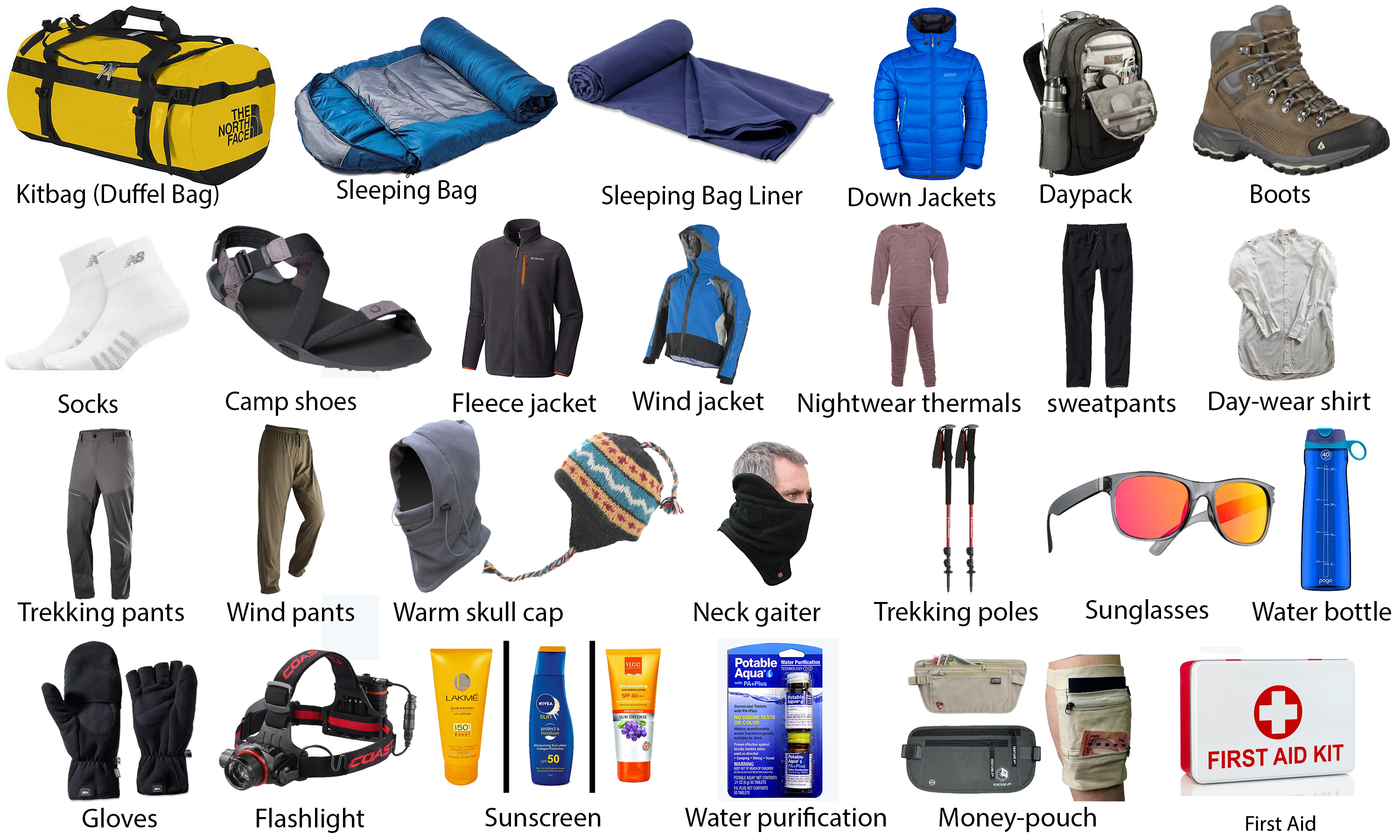
Source: https://www.explorehimalaya.com/trekking-gear-list-for-everest-base-camp-trek/
Packing for a 15-day trip to Everest Basecamp can be a daunting task, as the trek takes you to a remote and high altitude destination where the conditions can be harsh and unpredictable. However, with proper planning and careful selection of gear, you can ensure a successful and comfortable journey. Here’s a list of essential items to pack for your trek:
Clothing:
- Base layers (thermal tops and bottoms)
- Mid layers (fleece or insulated jackets)
- Outer layer (waterproof and windproof jacket and pants)
- Warm hat, gloves, and socks
- Sun hat and sunglasses
- Hiking boots
- Comfortable and quick-drying underwear
Gear:
- Sleeping bag
- Sleeping mat
- Trekking poles
- Headlamp (with extra batteries)
- Backpack
- Daypack for carrying water, snacks, and other essentials during the day.
Personal hygiene:
- Sunscreen (SPF 30+)
- Lip balm
- Hand sanitizer
- Toilet paper
- Personal hygiene items (toothbrush, toothpaste, wet wipes, etc.)
Medical:
- First-aid kit
- Personal medication (if any)
- Altitude sickness medication
- Pain relief medication
- Blister kit
Miscellaneous:
- Water bottle
- Snacks (energy bars, dried fruits, etc.)
- Cash and credit cards
- Travel document (passport, visa, etc.)
- Camera and extra battery
Note: You can also rent or purchase some of the gear and clothing items in Kathmandu, the starting point of the trek. It is important to check the weather forecast and pack accordingly. Make sure to pack light, as you will be carrying your own gear during the trek.
With these essential items packed, you can focus on enjoying the breath-taking views, the cultural experience, and the sense of accomplishment that comes with reaching the base camp of the world’s highest mountain.
PLANNING A 15-DAY TREK TO THE EVEREST BASECAMP
Planning a 15-day trek to the Everest Basecamp requires careful preparation to ensure a successful and enjoyable journey. Here are some steps to follow when planning your trek:
- Choose a reputable trekking agency: It is important to choose a reputable trekking agency that can help you obtain the necessary permits, arrange transportation, and provide a guide for the trek.
- Set a budget: The cost of the trek can vary depending on the level of comfort and services required. Set a budget and make sure to factor in the cost of transportation, permits, food, accommodations, and other expenses.
- Get in shape: The trek to the basecamp of Mount Everest is physically demanding, so it is important to start preparing well in advance. Engage in regular physical activity, such as hiking and running, to build endurance and strength.
- Plan your itinerary: The trek to the Everest Basecamp typically takes 15 days, but the itinerary can vary depending on the route chosen and the pace of the trekker. Plan your itinerary with the help of your trekking agency to ensure you have enough time to acclimatize and enjoy the journey.
- Pack appropriately: Pack appropriately for the trek, keeping in mind the weather conditions and the physical demands of the journey. Make sure to pack warm clothing, sturdy hiking boots, a good backpack, and other essentials such as a first-aid kit, a water bottle, and a headlamp.
- Get travel insurance: It is important to get travel insurance to protect against any medical emergencies or trip cancellations during the trek.
By following these steps, you can plan a successful and enjoyable 15-day trek to the Everest Basecamp. With proper preparation and a positive attitude, you can create memories that will last a lifetime.
